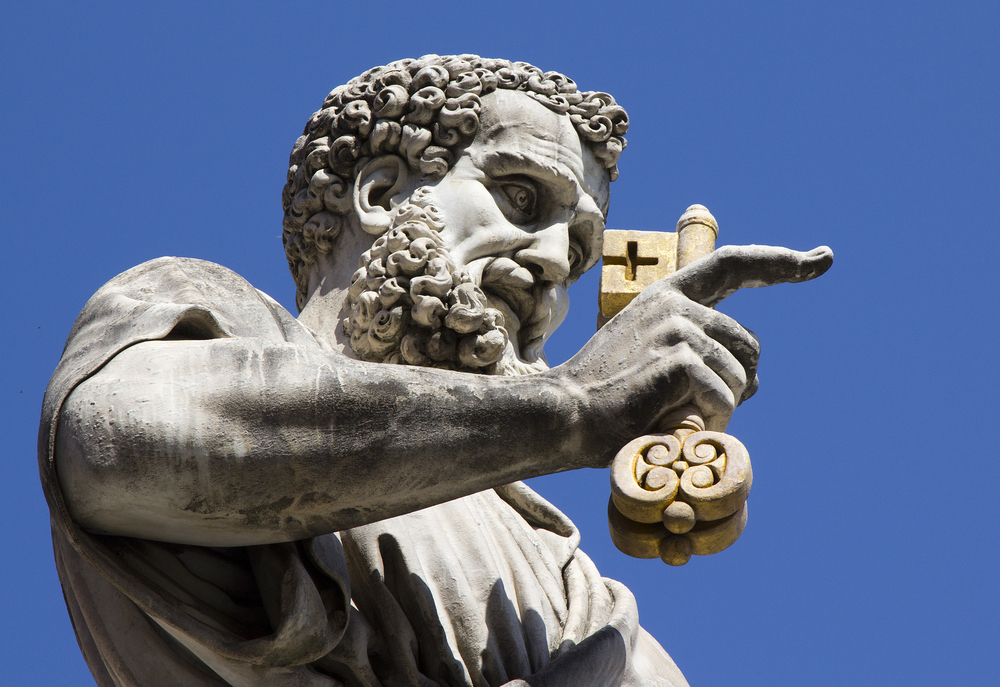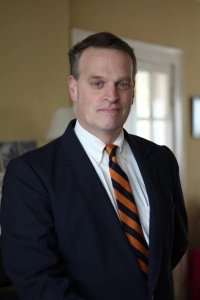There is a great article over there at newliturgicalmovement that deals with this text, significant to the worship of every Catholic:
“Mother Church earnestly desires that all the faithful should be led to that full, conscious and active participation in the ceremonies which is demanded by the very nature of the liturgy.” (Constitution on the Sacred Liturgy Art 14 Sacrosanctum Consilium)
What does the Church mean?
Now when I was growing up I thought that this was the big “break-through” that the church made in Vatican II. Vatican II finally shook off the cobwebs of sleepy passive Catholicism and ushered in a new and vibrant era of active singing, dancing, hand-clapping, music ministering, out-loud talking, hand shaking, praise and worshiping… spirituality that was 800 years long overdue.
Some of my earliest memories of going to mass included singing The King of Glory with guitars and tambourines. Back in the seventies and eighties this song seemed right!
And who can forget Stephen Colbert’s interpretive rendition!
Although I liked the song, I don’t think I was ever able to become accustomed to the idea that it was finally quite appropriate for liturgical purposes.
But it turns out that Vatican II was not saying something new when it called for “full, conscious and active participation,” but was rather restating and reiterating what the Church has always taught and even with the same words that St Pius X had employed 100 years earlier.
Filled as We are with a most ardent desire to see the true Christian spirit flourish in every respect and be preserved by all the faithful, We deem it necessary to provide before anything else for the sanctity and dignity of the temple, in which the faithful assemble for no other object than that of acquiring this spirit from its foremost and indispensable font, which is the active participation in the most holy mysteries and in the public and solemn prayer of the Church. (Tra Le Sollecitudine)
But what does “active participation” mean?
Well for me the big “break-through” came when I had the pleasure of hearing this very phrase discussed by the man who seemed to be its most ardent champion!

The one and only Msgr. Richard Schuler of St. Agnes in St. Paul (MN)
(By the way take a look at this cool letter from BXVI about Msgr. Schuler on Fr Z’s blog)
It was at the very first or second annual Sacred Music Conference (hosted by Christendom College that year), which I attended along with my first musical mentor and friend J.G. Phillips and Dr. Samuel Schmitt, where we heard Msgr. Schuler explain what “active participation means.”
That was the conference where we sang a solemn high mass as the culminating event in the crypt Church of the Basilica of the National Shrine of the Immaculate Conception in Washington DC.

I remember this event very well because I had inadvertently pocketed the keys to the rental car, in which we had traveled together from Massachusetts, and, having obtained a ride from another friend, had thoughtlessly left my two friends stranded back at the college in Front Royal!
Well, not wanting to miss the major event for which we had practiced all week, the two of them took a taxi for the roughly 75 miles to the shrine. I noticed that Jerry and Sam came a little late and as I smirked in a rebuking manner at both of them while singing Tu Es Petrus (I can’t remember which one) Jerry whispers to me just as I was singing the words
“Et tibi dabo claves regni”
claves… claves… DABO claves! He wasn’t really whispering…it was a sort of very low and menacing under-the-breath sort of utterance. It was just then that I felt the keys in my pocket and remembered!

You will be happy to know that I did “man up” with some kind of partial taxi reimbursement to cover the $150 fare. Jerry was very forgiving!
It was still a very beautiful solemn Mass and besides Msgr. Schuler we had the pleasure of being directed by the great Paul Salamunovich
Paul was great! I really liked him although it was a little intimidating singing under his direction.
But back to the point! Msgr. Schuler said, in effect, the following concerning the teaching in Sacrosanctum Consilium quoted above:
The word “full” (plena) refers to the integrally human fashion in which the baptized faithful take part in the liturgy, i.e., internally and externally. The word “conscious” (conscia) demands a knowledge of what one is doing on the part of the faithful, excluding any superstition or false piety. But the word “active” (actuosa) requires some greater examination.
…The difference between participation in the liturgy that can be called activa and participation that can be labeled actuosa rests in the presence in the soul of the baptismal character, the seal that grants one the right to participate. Without the baptismal mark, all the actions of singing, walking, kneeling or anything else can be termed “active,” but they do not constitute participatio actuosa. Only the baptismal character can make any actions truly participatory. Let us use an example. Let us say that a pious Hindu attends Mass, takes part in the singing and even walks in a procession with great piety. In the same church is also a Catholic who is blind and deaf and who is unable to leave his chair; he can neither sing nor hear the readings nor walk in the procession. Which one has truly participated, the one who is very active, or the one who has confined himself solely to his thoughts of adoration? Obviously, it is the baptized Catholic who has exercised participatio actuosa despite his lack of external, physical movement. The Hindu even with his many actions has not been capable of it, since he lacks the baptismal character.
Powerful! I did not take these notes at the conference but rather copied them from the excellent article that you may find here
Sure “Particpatio activa.” But “Participatio Actuosa” is the goal!






Yes, yes, yes!!! This phrase “active participation” is one of the main reasons for all the strange practices that began after Vatican II! It must be explained to the faithful because it is ambiguous. There is another phrase “in the spirit of Vatican II” which seeks to justify things such as: ad populum vs. ad orientum, communion in the hand, EXTRA-ordinary ministers of the Eucharist becoming ordinary, etc…. ALL of which emerged I hopes of the faithful “actively participating” and NONE of which arose out of changes in the Liturgy made by the council fathers in the documents of Vatican II!!
It is also important to note that the phrase “active participation” is not a phrase conjured up in the 60s as many are led to believe. Pope Saint Pius X (1835-1914) a very orthodox and traditional Pope used this phrase himself, “Since we have very much at heart that the true Christian spirit be revived in all possible ways and that it be maintained among the faithful, it is above all necessary to provide for the holiness and dignity of the sacred places where precisely the faithful gather to draw this spirit at its primary and indispensible source, that is, in active participation in the sacred mysteries and in the public and solemn prayer of the Church” (Acta Sancta Sedis (ASS 36:28 (1904) ibid p.12)”
As far as ” active participation” goes…I have nothing against it, but I want to participate in the real texts and music of the Mass: not something else. That’s why our small church in Cleveland began singing propers routinely at the 9 a.m. Mass. We just posted this simple catechesis in the bulletin: “At Mass we have the freedom to sing all types of music to fully express our love of God. But the entrance and commnnion chants of the Mass have been overlooked for quite some time. The choir and congregation sings these chants at the 9 AM Mass not to be be “old-fashioned” or traditional. We sing these prayers because they are beautiful and inspiring. The Mass will present itself more fully and inspire our prayer if we do not regularly omit these prayers and musical forms. To “fully participate” we need to be sure that we “fully” present the Mass . Our goal is to present the Mass more completely through chant and the proper texts while inspiring a lively and deeper participation. Participate and Join the Choir. call Ralph 216 641 7988 [email protected]
Ralph, Thanks for bringing this to our attention. I had no idea you were doing this! I enjoyed your website as well http://gregorianchant.weebly.com.
Mark – Wonderful memories of that colloquium long ago. can still recall the long taxi ride into DC with JGP plotting his revenge.